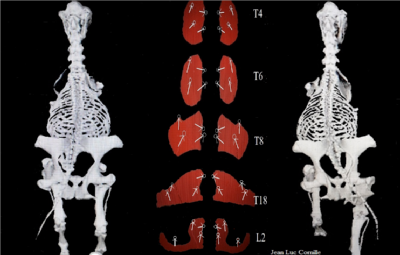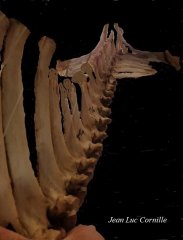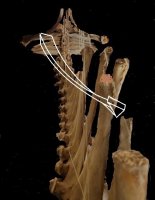Straightness Forum
Starts May 15, 2021- Join Us Today
Straightness Forum
Everyone knows General L’Hotte’s famous words, Calm, Forward, and Straight, which were in the General’s mind, components of lightness.
The Science of Motion’s “Straightness Forum” plans to compare the scientific knowledge available at the time of Alexis L’Hotte. (1825-1904) The actual understanding of the thrust generated by the hind legs and managed forward through the horse’s thoracolumbar spine by the muscular system, fascia, tendons, and ligaments.
The Science of Motion’s Forums gains popularity for the pertinence, the cutting age, the clarity, and the quality of the information. Facts and superb illustrations allow a clear understanding of complex subjects and efficient and friendly discussions.
For those who have participated in the previous forums, you know about the deepness and clarity of the information. For the ones who join us for the first time, you will be amazed to feel at home and ease learning how to apply new knowledge.
Course is online and you can log in anytime to read, comment, ask questions, DL files and videos. Is not a live event.
The “Lightness Forum” is scheduled to start May 15. 2021. Join us now. Payment link below. Cost is $125.00 USD
Contact Helyn@scienceofmotion.com

From a kinematics point of view, straightness is only an instant
between right and left lateral bending.

From a dynamics perspective, straightness is the precise and effective management of the hind legs thrust traveling forward through the thoracolumbar spine.
The Science of Motion Straightness Forum. Starting May 15
General L’Hotte defines straightness as the hind legs following precisely the track of the front legs. “When the horse is straight, the hind hooves follow exactly the lines followed by the front hooves.” Alexis L’Hotte sees straightness as a way to achieve proper forward transmission of the hind legs’ thrust. The idea is theoretically correct but practically too simplistic and demands a deeper understanding of how the muscular system of the thoracolumbar spine manages the hind legs’ thrust into a uniform direction. This knowledge was not available in the 19TH century.
The propulsive power of the hind legs is delivered to the thoracolumbar spine through the sacroiliac joint.
If the thoracolumbar spine were straight, as in this picture, it would be conceivable that the hind legs in line with the forelegs could transmit thrust forward in a straight line. 
To create this picture, I had to align each vertebra and tape them on the other side. This is not reality. Perfect muscular symmetry does not exist.
This is reality. The lumbar vertebrae are slightly bent, and the hind legs thrust is acting in an oblique direction.
This is, in fact, an ordinary reality as the asymmetry of the lumbar spine is very mild.
 This is a more common reality; a rotation of the thoracic vertebrae directing the hind legs’
This is a more common reality; a rotation of the thoracic vertebrae directing the hind legs’
thrust transversally in one direction.
The horse cans also travel with a thoracolumbar spine bent in one direction. The horse displaced the shoulders laterally in front of the haunches with a thoracolumbar spine bent crooked.

I make the hind hooves follow the lines of the front hooves turning the picture without correcting the crookedness of the thoracolumbar spine.

Alexis L’Hotte advised against science; “The language of the equestrian art is at times in disaccord with the principles of science.” (Questions Equestres) He also promotes submission to the rider’s aids. And yet, his philosophy applies to actual knowledge. L’Hotte felt that the rigidity of science, which he referred to as mathematics, handicapped feeling, and experience.
Today, science has inverted the situation. The absolute submission was the only solution our ancestors had to overcome the horse’s difficulties and resistances. The knowledge of the performances’ athletic demand was elementary, and concepts such as tensegrity, physical intelligence were unknown. The large discrepancy between L’Hotte’s definition of straightness and the actual knowledge of subtle physical orchestration allowing the horse to convert forward through the thoracolumbar spine, the hind legs thrust into forwarding movement, balance control, and sophisticated adjustments exposes the fallibility of the literature. The art of coordinating the horse’s physique for straightness and forward transmission of the forces is in the practical application of actual science, which produces the art that L’Hotte relegates to feeling and experience.
Jean Luc


